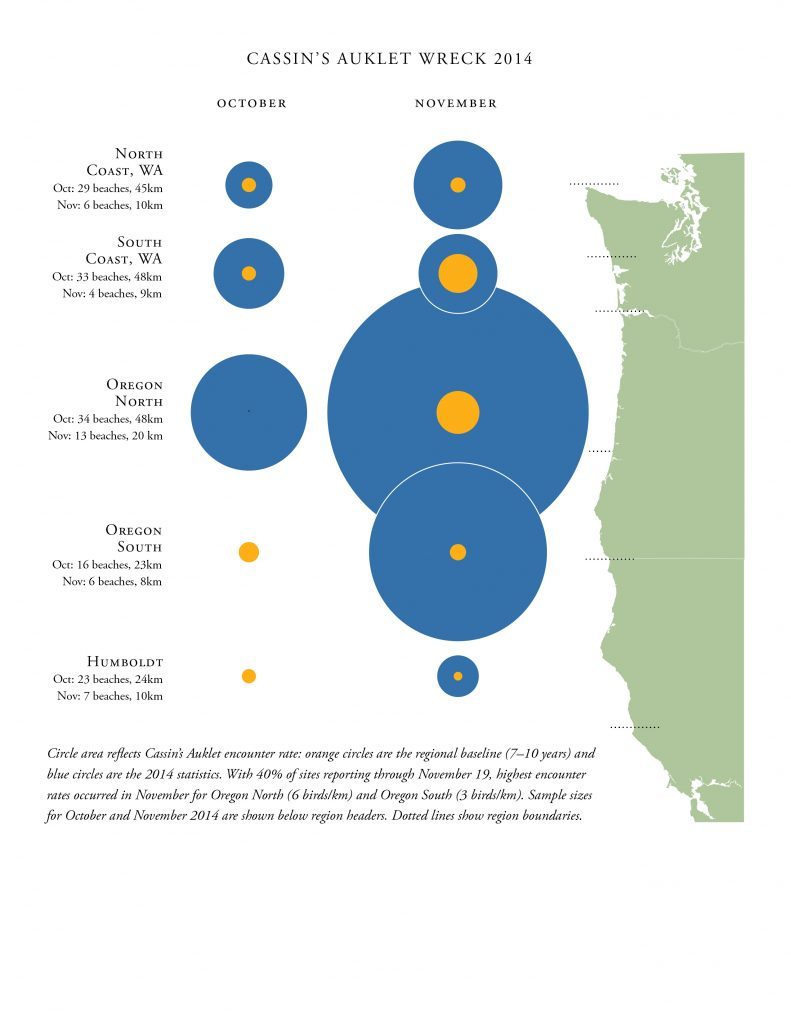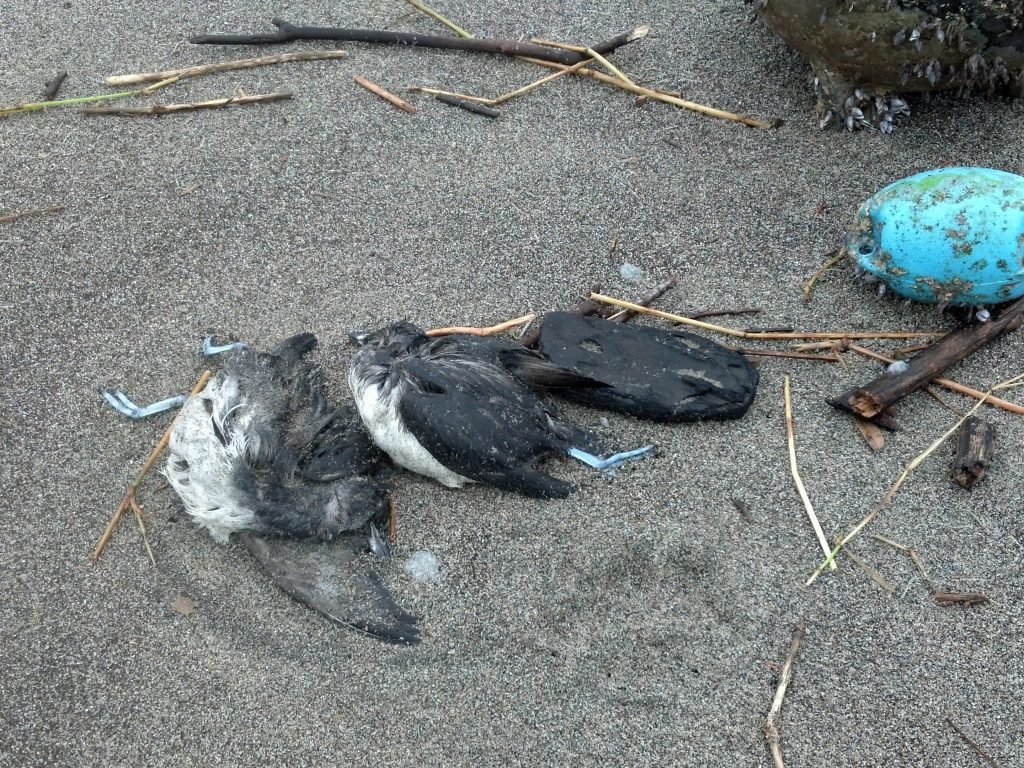Beginning in late October and continuing through mid November, we’ve witnessed an uptick in Cassin’s Auklets. In collaboration with West Coast beached bird partners Beach Watch (San Francisco – GFNMS) and BeachCOMBERS (Monterey Bay – MBNMS), and British Columbia Beached Bird Survey we know this event extends from Washington State south to Monterey Bay. The highest per kilometer counts occurred in Oregon North (30 Cassin’s Auklets per kilometer at McPhillips Beach in Tillamook County). Why Cassin’s, why now? Cassin’s Auklet colonies in British Columbia (75.9% of the North American population) fared well this season with high (the highest?) reproductive output recorded from decades of monitoring. Lots of young-of-the-year out in the Pacific this year! Ocean conditions, may (though we don’t have evidence yet) be deteriorating more than normal. Storm activity November 15/16 preceded a wave of beaching – not unusual – the combination of young birds and difficult conditions predictably lead to wrecks, like those we see most years, at the end of a good Common Murre breeding season.
UPDATE: A new wave of Cassin’s Auklets hit the coast of Washington and Oregon beginning Sunday, December 21 with up to 100/km on some beaches. These small, fist-sized birds have a dark bill (pale spot at base), dark back and wings, white belly. Fresh specimens show blue-ish feet (3 webbed toes, no hind toe).


